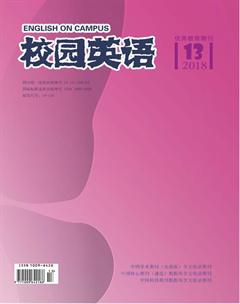Quality Direction and Quality Performance
Recently I had the pleasure of watching one of William Shakespeares most beloved tragedies, Hamlet, performed by team Wuhan University at the Fourth Chinese Universities Shakespeare Festival. Director Dia put together an amazing show with smooth scene changes and a striking cohesiveness. In addition, the lighting and costume design enhanced the show in their own ways, offering insights into the characters psyches. The production included four scenes: the ghost scene, the “nunnery” scene, the queens closet scene, and the “To be or not to be” scene.
Spatial Design
Hamlet entered the stage from the left side in the “nunnery” scene, right side in the queens closet scene, probably because the eye tends to read s picture from left to right. Physical movements in this direction seem psychologically natural, whereas movements from right to left tend to be tense and uncomfortable. Another feature is that the top position was associated with power and control, the bottom with vulnerability, subservience, and powerlessness. In this production, the director emphasized Hamlets strength, dominance, and ruthlessness over Gertrude and Ophelia, whose lack of motion can be interpreted as spiritual and psychological paralysis. Hamlet attacked them from above, a sign of maximum supremacy. He was like an invading villain, walking toward the audience, aggressive, hostile, and threatening. His facial expression was distorted, completely mad and untrustworthy. Whats happening in his heart can be seen through his symbolic body movements. But in the final scene, he moved away from us, a fashion suggesting weak, fearful, and suspicious.
Acting and Language
For me, all the three actors were not over-passionate, since only large actions are effective in the live theater. Drama is “live”, whereas videos are “recorded,” in which an extreme close-up allows us to count the lashes of an eyelid. But in theater, close-up actions would be missed by all except those in front rows, unless the actions were exaggerated and stylized by the actors. In this account, Zhao Zhiwen (featuring Hamlet) was particularly impressive. He knew what to do with his hands—when to let them hang and when to use them for expressive gestures. He started at a relatively low energy level, then increased with each scene progressively, and, in the climax, his psychic energy reached its zenith and finally burst in the resolution of the paly. Violence was conveyed by loud, harsh and rapid dialogues. The voice of Hamlet grew louder, faster, and higher pitched, but stayed in character throughout the play. His walk, limp, run, eyebrows twitch, heads inclination to one side when listening, all of those proved that he deserves the Best Actor of the Festival.
Shakespeares language is 400 years old and so archaic that to recite the language clearly is no easy feat. Dialogues must be spoken with feeling by flesh-and-blood human beings. With a flexible, trained voice, Zhao Zhiwen combined a maximum of expressiveness with a maximum of clarity. I was particularly impressed by the final scene showing Hamlet with his back to the audience: the actors sonorous voice guaranteed the clarity of the characters speech. The nuances of the dialogue were conveyed successfully by all the three actors, for they were believable even when reciting highly stylized and unnatural dialogues.
Mood and Atmosphere
Hamlet is not wrong when he says “Denmark is a prison.” Doubt and uncertainty are the prevailing emotions of this play. The characters are closely watching each other. That is precisely one of the motifs of the play. Take, for instance, the ghost scene, which was strewn with brilliant directorial choices and striking details. Zhao Zhiwens iconic hand gestures expressed Hamlets shock at the first sight of the Ghost. He pointed not to back stage where the drumbeats came from, but to the audience as if we were the ghost prompting Hamlet to revenge, a fantastic way to keep the audience engaged. To us, the story itself is well-known and the plot predictable. The characters seemed to be aware of the situation that someones watching them—in this case, the audience. Though technically less faithful to the stage script, in this production this scene was in fact more Shakespearean in spirit than other scrupulously literal versions.
Costumes and Lighting
In this production, costumes revealed the class, self-image, even psychological states of the three characters, and the symbolic implication of the colors was wonderful.
The illumination of this production was no causal matter. In the ghost scene, the flickering lights shared the agitated emotions with the audience. Through the use of candle light, which was highly selective in its focus and intensity, the director guided our eyes to Hamlet himself. The candle light was seldom static, for even the slightest movement of the actor can cause the lighting to shift, which might be the very symbol of Hamlets vacillation. I might suggest that side lighting may be of useful technique to symbolize Hamlets divided nature, plunging half of his face in darkness, the other half in light.
【作者簡介】丁玥琨,武汉大学外国语言文学学院英文系。

